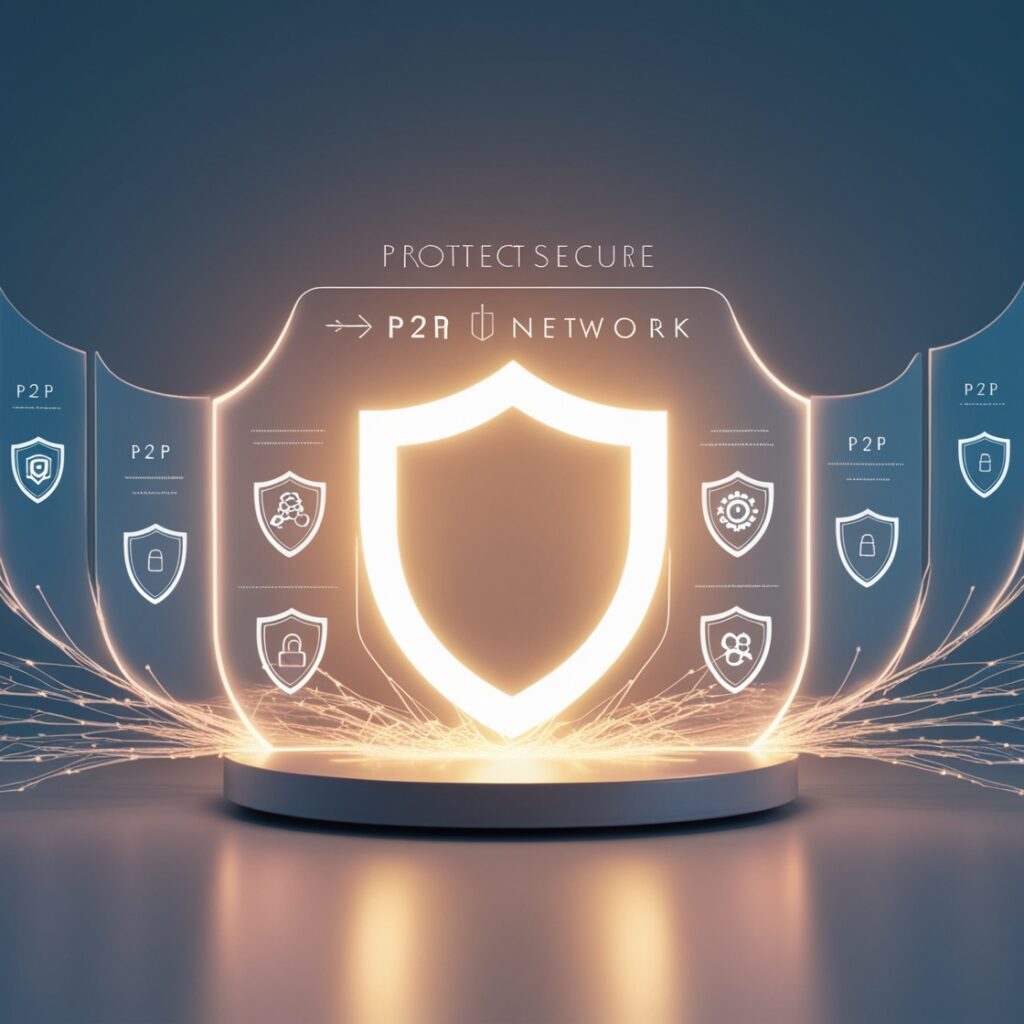Table of Contents
1. Introduction
2. Understanding Security in P2P Networks
3. Major Challenges in P2P Network Security
- Malware and Virus Propagation
- Data Integrity and Authenticity
- Sybil Attacks
- Eavesdropping and Privacy Risks
- DDoS Attacks and Network Overload
- Lack of Centralized Monitoring
4. Innovative Solutions to P2P Security Challenges
- Enhanced Encryption Techniques
- Blockchain for Data Integrity
- Consensus Algorithms
- Decentralized Identity Management
- Network Monitoring Tools
- Incentive Mechanisms for Security Compliance
5. Best Practices for Securing P2P Networks
6. The Future of P2P Network Security
7. Conclusion
Introduction
Starting with the P2P Network Security! Peer-to-peer (P2P) networks are integral to modern decentralized systems, enabling efficient resource sharing and communication. However, the very structure that makes P2P networks appealing—decentralization—also introduces unique security vulnerabilities. From malware propagation to privacy breaches, securing P2P networks is a growing challenge. In this blog, we will explore the key challenges in P2P network security and highlight innovative solutions to mitigate risks and enhance network safety.

Understanding Security in P2P Networks
P2P networks rely on a decentralized model where devices (peers) share resources directly without a central server. This structure offers advantages like reduced server costs, better scalability, and increased resilience. However, the lack of central oversight also creates vulnerabilities, such as unverified data sharing and susceptibility to malicious activities. Addressing these security concerns is critical for the sustainable growth of P2P systems.
Major Challenges in P2P Network Security
Malware and Virus Propagation
P2P networks are prime targets for malware due to their decentralized nature. Malware can easily spread from one peer to another, causing widespread damage.
Examples:
Kazaa and LimeWire were infamous for distributing infected files, exposing millions of users to security risks.
Data Integrity and Authenticity
In a P2P system, verifying the authenticity of shared data is difficult. Malicious actors can inject fake or corrupted files, undermining the network’s reliability.
Key Challenges:
- Lack of centralized data validation mechanisms.
- Difficulty in tracing the origin of altered data.
Sybil Attacks
A Sybil attack occurs when an attacker creates multiple fake identities (nodes) to dominate or disrupt the network.
Impact:
- Manipulation of voting or consensus mechanisms.
- Reduced trust in the network’s reliability.
Eavesdropping and Privacy Risks
P2P communications are vulnerable to interception by malicious entities. Attackers can eavesdrop on sensitive data exchanges, compromising user privacy.
Real-Life Scenario:
- Unauthorized access to file-sharing sessions leading to data breaches.
DDoS Attacks and Network Overload
Distributed Denial-of-Service (DDoS) attacks can exploit the decentralized nature of P2P networks, overwhelming them with traffic and causing service disruptions.
Consequences:
- Reduced network performance.
- Loss of user trust.
Lack of Centralized Monitoring
Without a central authority, identifying and mitigating security threats becomes challenging. Decentralized governance limits oversight and rapid response.
Problem Areas:
- Slow detection of anomalies.
- Difficulty in enforcing security standards.

Innovative Solutions to P2P Security Challenges
Enhanced Encryption Techniques
Encryption is essential for securing P2P communications.
Solutions:
- End-to-end encryption protocols like TLS and AES.
- Secure file transfer protocols to prevent unauthorized access.
Blockchain for Data Integrity
Blockchain’s immutable ledger can enhance data authenticity in P2P networks.
Benefits:
- Transparent transaction records.
- Decentralized verification of data integrity.
Consensus Algorithms
Consensus mechanisms like Proof-of-Work (PoW) and Proof-of-Stake (PoS) can reduce vulnerabilities like Sybil attacks.
How It Helps:
- Ensures trust among network participants.
- Prevents domination by malicious nodes.
Decentralized Identity Management
Using decentralized identifiers (DIDs) improves user authentication without compromising privacy.
Examples:
- W3C DIDs framework for secure identity management.
Network Monitoring Tools
Decentralized monitoring tools powered by AI can detect anomalies in real-time.
Features:
- Proactive threat identification.
- Automated response mechanisms.
Incentive Mechanisms for Security Compliance
Rewarding users for adhering to security protocols promotes safer networks.
Implementation:
- Token-based incentives for reporting vulnerabilities.
- Community-driven initiatives to enhance network security.

Best Practices for Securing P2P Networks
Regular Updates: Keep software up-to-date to address vulnerabilities.
User Education: Train users on identifying phishing attempts and other threats.
Multi-Layered Security: Combine encryption, monitoring, and authentication for robust protection.
Access Controls: Limit access to sensitive data based on user roles.

The Future of P2P Network Security
Emerging Trends
Quantum Cryptography: Revolutionizing encryption with quantum-resistant algorithms.
AI Integration: Leveraging AI for predictive threat analysis and network optimization.
The Role of IoT
As IoT devices increasingly rely on P2P communication, ensuring their security becomes paramount.
Challenges:
- Securing resource-constrained devices.
- Addressing interoperability issues.

Collaborative Efforts
A unified approach involving developers, users, and regulators is crucial for advancing P2P security.
Conclusion
P2P networks have transformed how we share resources and communicate, but their decentralized nature presents unique security challenges. From malware propagation to privacy breaches, addressing these vulnerabilities is critical for ensuring trust and reliability. By adopting innovative solutions like enhanced encryption, blockchain, and decentralized identity management, we can mitigate risks and create secure P2P ecosystems. The future of P2P networks lies in collaboration, innovation, and a proactive approach to security.
